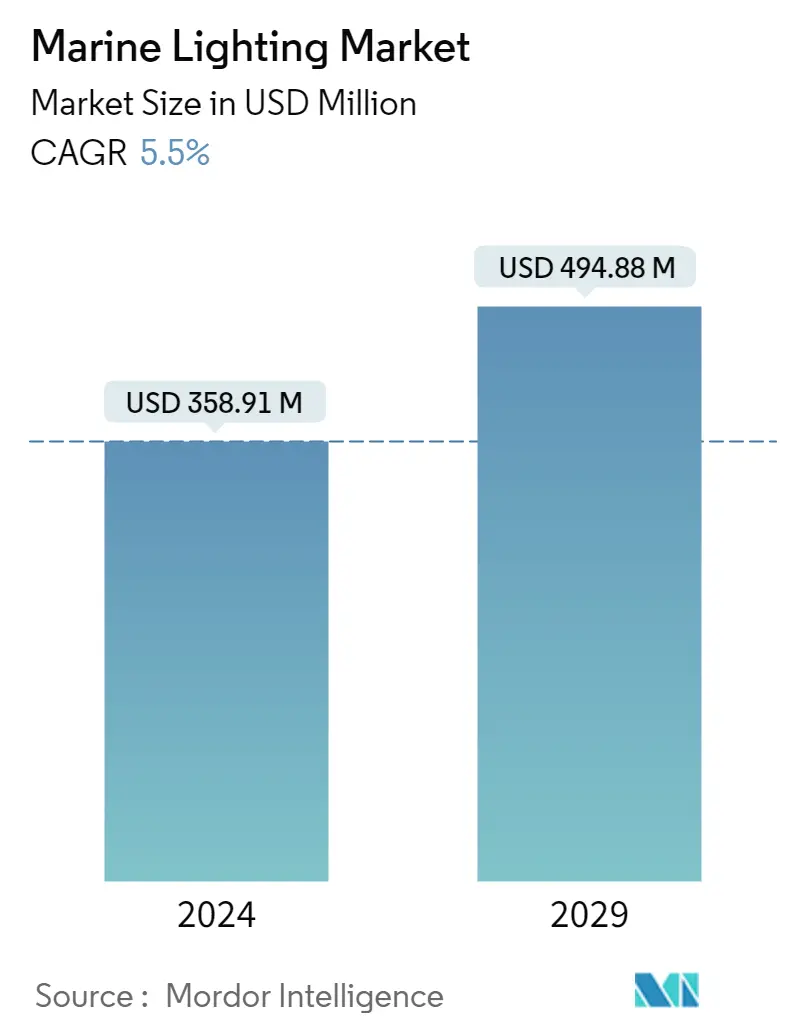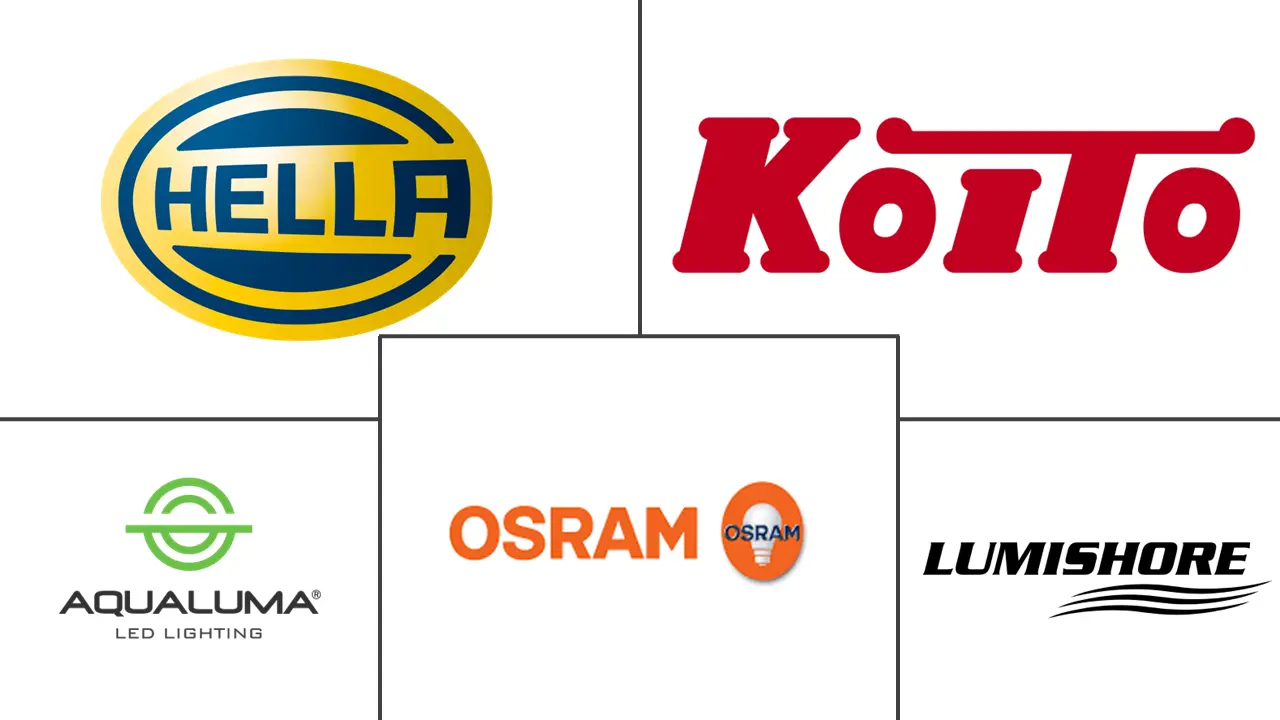Market Size of Marine Lighting Industry

| Study Period | 2019 - 2029 |
| Market Size (2024) | USD 358.91 Million |
| Market Size (2029) | USD 494.88 Million |
| CAGR (2024 - 2029) | 5.50 % |
| Fastest Growing Market | Asia Pacific |
| Largest Market | North America |
Major Players
*Disclaimer: Major Players sorted in no particular order |
Need a report that reflects how COVID-19 has impacted this market and its growth?
Marine Lighting Market Analysis
The Marine Lighting Market size is estimated at USD 358.91 million in 2024, and is expected to reach USD 494.88 million by 2029, growing at a CAGR of 5.5% during the forecast period (2024-2029).
Marine Light is a source of illumination in a vessel used for multiple applications like navigation, docking, safety, and decoration. Over the years, the maritime industry has been evolving, changing how transportation, shipping, loading, and unloading goods are done. Recently, the emergence of a luxury cruise, coupled with rising government regulations for marine lighting, can impact most of the aspects of operation and business in the industry.
- Till a few years ago, the marine industry was highly dependent on its various mini-ecosystems, consisting of ports, authorities, ships, ship operators, owners, and cargo owners. However, researchers have been exploring solutions to increase efficiency, safety, and environmental protection since the last decade. Some of these solutions include advanced technology-enabled tunable lighting and intelligent lighting, which can potentially change the industry's operations. For instance, marine lighting solutions have also gained traction in recent years.
- Rising shipbuilding activities worldwide and a healthy outlook for seaborne trade activities are expected to drive market demand in the future years. Furthermore, growing cruise tourist activities worldwide are attracting many investors to participate in developing new ships. Over the projected period, this is expected to generate significant growth possibilities for maritime lighting producers. Marine lights for boats are also increasing market demand. Boat lighting is increasingly popular as more people invest in their ships.
- The government bodies in the different regions are investing to increase ships' production, creating a chance for the marine lighting market to grow. For instance, in May 2022, under the Shipbuilding Financial Aid Policy, the Indian government approved financial assistance for 47 boats totaling INR 155 crore (USD 18.94 million). These ships have a combined contract value of INR 850 crore (USD 103.9 million). The shipping ministry said 95 applications had been received seeking in-principle approval for 170 vessels with a contract value of INR 2,620 crore (USD 320.2 million).
- Maritime LED lighting is essential in all marine vessels, including cruise ships, boats, and commercial and defense ships. Marine LED lights are utilized in a variety of applications on a boat. They are employed in navigation systems, alarm systems, and underwater lighting, among other things. Marine LEDs can be utilized in undersea and surface water boats/ships for vital applications like signaling. These lights are rust-proof, waterproof, and long-lasting. They can pass various tests, including HVAC, HVDC, current load, and signal quality. LEDs are currently replacing traditional nautical lights because they are more compact, brighter, and have a higher luminous efficiency.
- Additionally, in the upcoming years, the market is anticipated to be driven by government initiatives for energy efficiency goals. For instance, the Indian government declared in July 2022 that it would reduce emissions from the shipping industry and support the creation of net zero and low-emission alternatives. It was also stated that by 2030, all major ports would be self-sufficient in electricity due to initiatives for "green warehousing" using environmentally friendly/natural solutions like natural light or energy-efficient lighting.
- Inflation significantly impacts ultimately leading industrial manufacturing, as it can lead to higher costs for manufacturers. This can be due to various factors, such as higher prices for raw materials, increased shipping costs, and labor costs and shortages. As a result, manufacturers may be forced to raise their prices to maintain profitability, which can ultimately lead to decreased demand for their products. In addition, inflation can also lead to contract constraints, shifts in labor, and input issues for manufacturers. The increase in global inflation is anticipated to restrain the growth of the studied market. For instance, according to the IMF, the global inflation rate increased by 8.73% in 2022 compared to 2021.
- Further, the high initial investments in installing and maintaining complex lighting systems will likely hinder the growth of the studied market.
